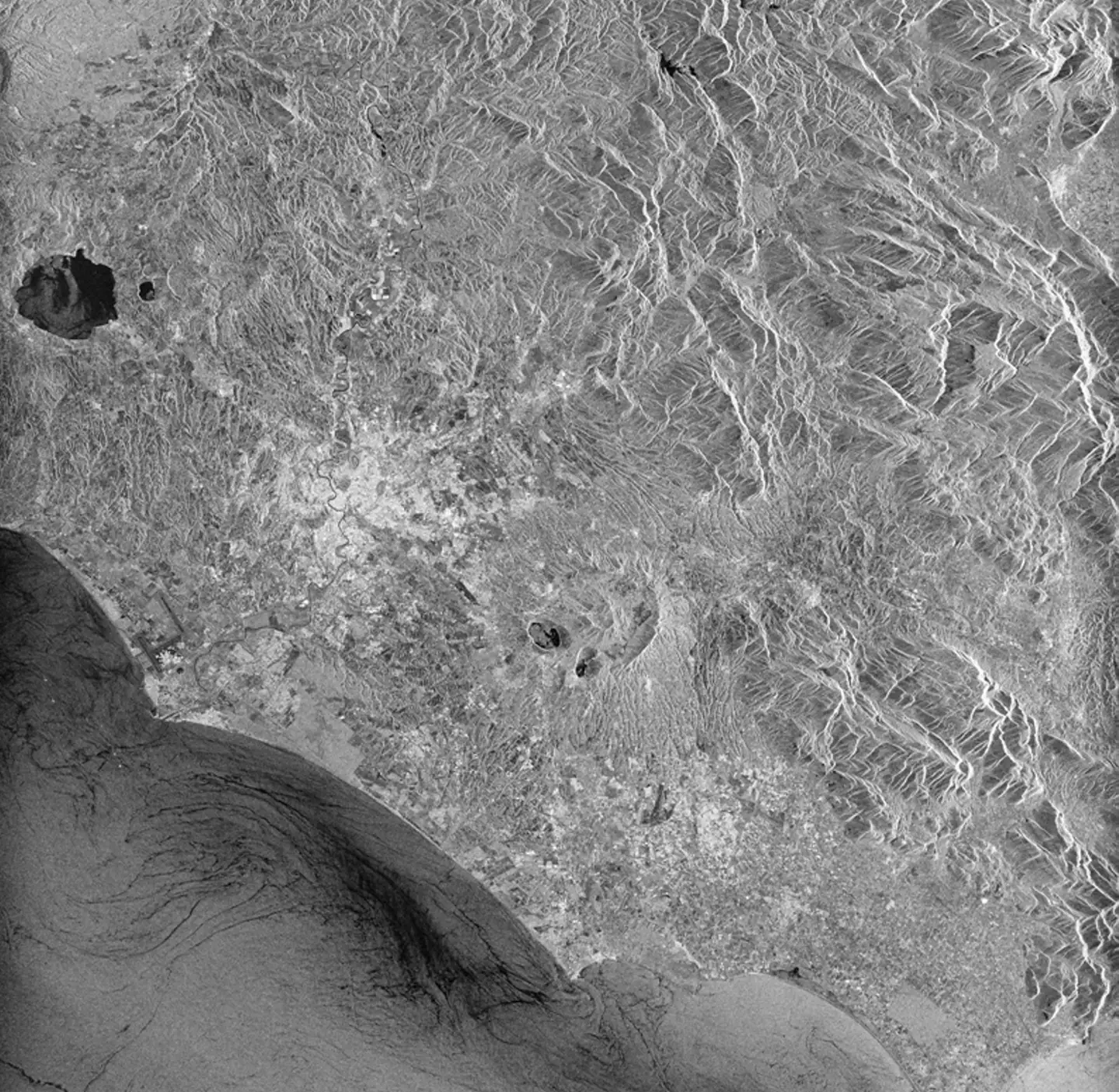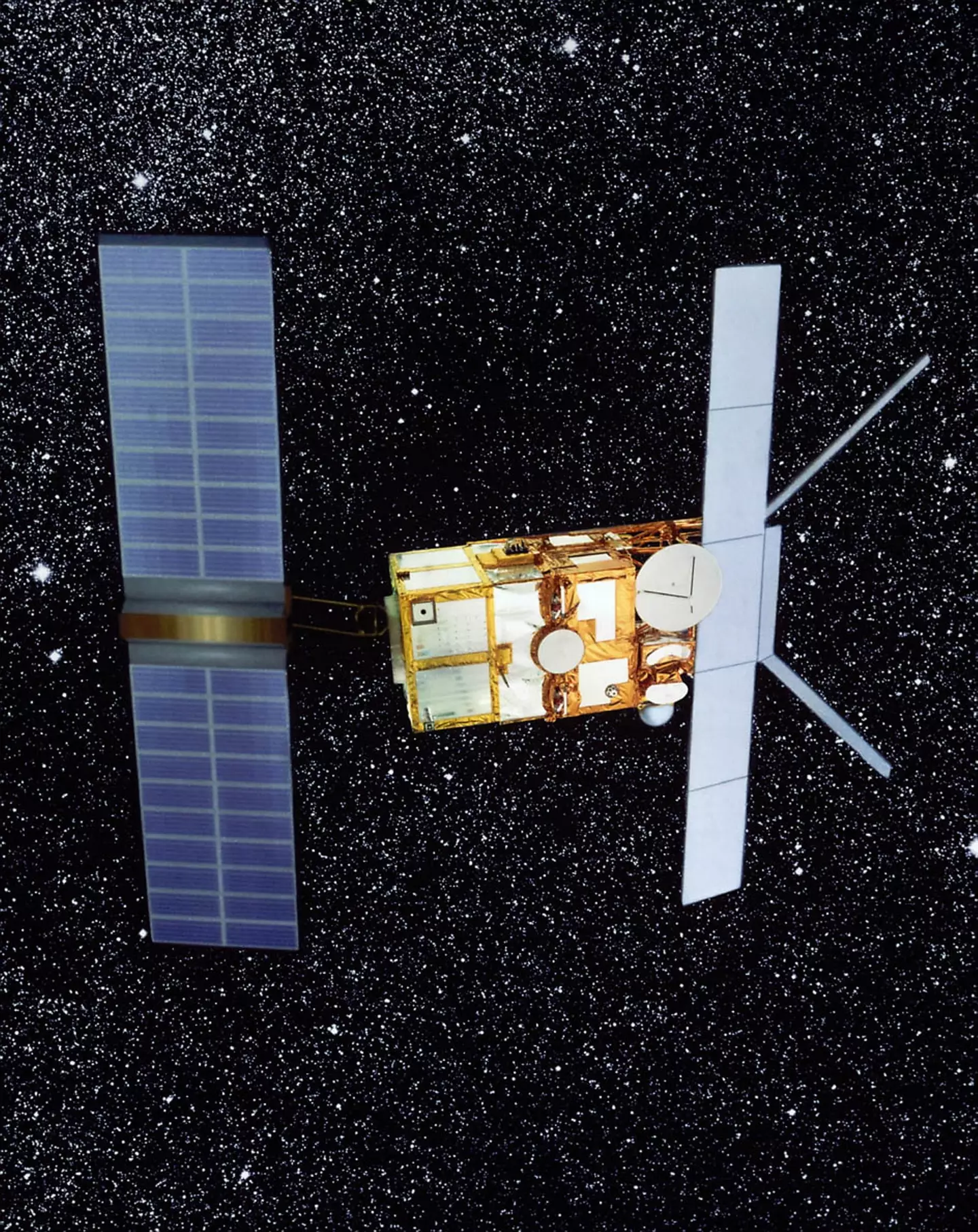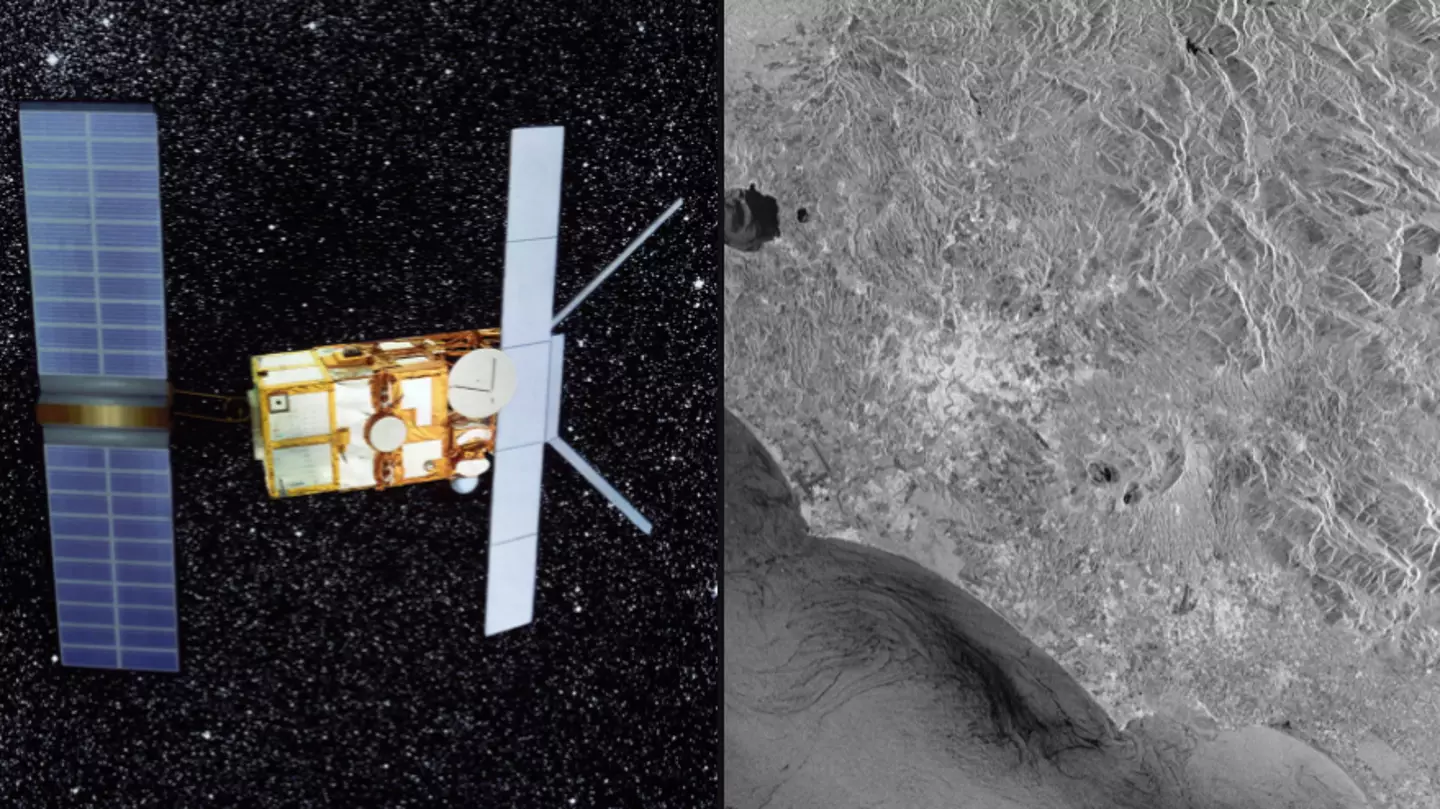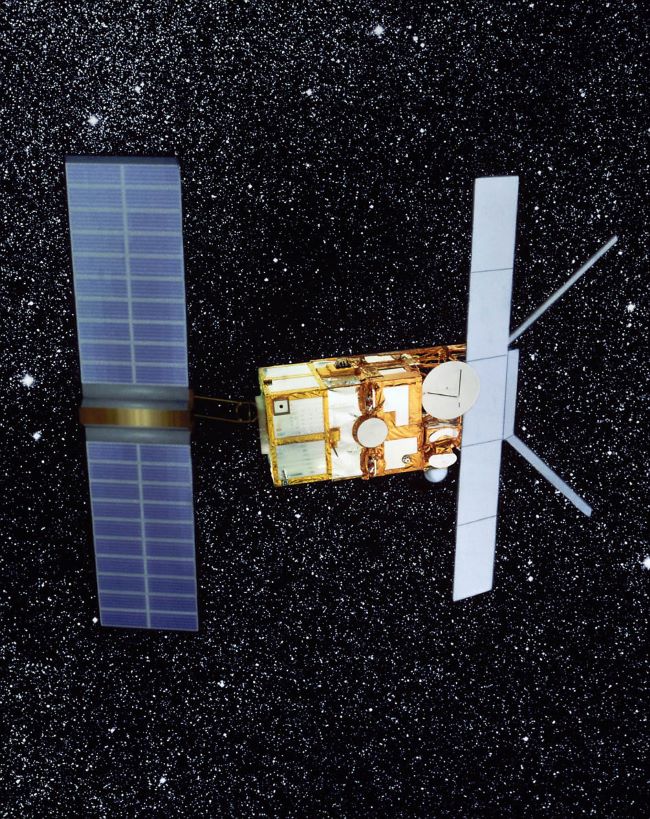A dead European satellite is set to crash back to Earth in the next few days. The ERS-2 satellite, which was launched into space in 1995 and ended its mission in September 2011, has been deorbiting ever since. It's expected that it will impact Earth sometime next week (February 20-23) with the largest fragment of the satellite estimated to be around 52 kg. During re-entry, ERS-2 is expected to break up into pieces and most of them will burn up.
Dead European Satellite Set to Crash Back to Earth in Next Few Days: ERS-2
Dead European satellite ERS-2 is set to crash back to Earth in the next few days.
The largest fragment of the satellite estimated to be around 52 kg.









Confidence
100%
No Doubts Found At Time Of Publication
Sources
77%
Scientists issue update on when doomed satellite will hit Earth but still have no idea where it will land
LADbible.com Saturday, 17 February 2024 07:39Unique Points
- The satellite's mission ended in 2011 and now it is on its way back to Earth.
- Despite scientists issuing an update, they still have no idea where the satellite will land when it hits Earth.
- ERS-2 was launched into space in April 1995 and collected valuable data on Earth's land surfaces, oceans, and polar caps. It ended its mission in 2011 after a series of maneuvers to deorbit the satellite.
Accuracy
- During re-entry, ERS-2 will break up into pieces and most of them will burn up.
Deception (50%)
The article is deceptive in several ways. Firstly, the author claims that scientists have issued an update on when the satellite will hit Earth but they still have no idea where it will land. However, this statement is misleading as there are multiple sources quoted throughout the article stating that ESA has predicted a time and location for re-entry with increasing certainty as we approach the day of re-entry.- The author claims that scientists still have no idea where it will land. However, this statement is misleading as there are multiple sources quoted throughout the article stating that ESA has predicted a time and location for re-entry with increasing certainty as we approach the day of re-entry.
- The author states that 'it was previously reported that the crashing of ERS-2 would happen on 19 February at 10.26pm GMT'. However, this statement is false as it has been updated to a new time and date.
Fallacies (70%)
The article contains an appeal to authority fallacy by citing the European Space Agency (ESA) as a source of information. The author also uses inflammatory rhetoric when describing the satellite's re-entry as 'natural', despite it being uncontrolled and posing risks to Earth. Additionally, there is no clear evidence presented in the article that supports any claims made by the ESA or other sources.Bias (85%)
The article contains a statement that the satellite's mission ended in 2011 and now it is on its way back to Earth. This implies that there was no purpose for the satellite after its mission ended, which could be seen as biased towards those who believe in space exploration and funding for scientific research.- The satellite's mission ended in 2011
- This implies that there was no purpose for the satellite after its mission ended
Site Conflicts Of Interest (100%)
None Found At Time Of Publication
Author Conflicts Of Interest (0%)
None Found At Time Of Publication
64%
A dead satellite will crash back to Earth this month. What to know.
USA Today Thursday, 15 February 2024 00:00Unique Points
- ERS-2 is expected to start disintegrating in the atmosphere about 50 miles above Earth.
- Some debris could crash into the surface, but it's most likely any debris would land in an ocean.
Accuracy
- The ERS-2 satellite is expected to start disintegrating in the atmosphere about 50 miles above Earth.
Deception (30%)
The article is misleading in several ways. Firstly, it states that the ERS-2 satellite will crash back to Earth this month when there is no evidence of a collision course with any other object or space debris. Secondly, the article implies that most of the space junk in orbit around Earth consists of defunct satellites and small fragments from rockets when in fact, it can also include human waste from astronauts on space missions. Lastly, while there is no evidence to suggest that any debris will crash into land masses or cause harm to humans, the article implies otherwise by stating that some debris could potentially do so.- The sentence 'After 16 years of operation, a defunct satellite could crash back to Earth this month.' is misleading because there is no evidence of a collision course with any other object or space debris.
- The sentence 'Most likely any debris would land in an ocean' implies that the ERS-2 will cause harm to humans and land masses when there is no evidence for such claims.
Fallacies (75%)
The article contains several fallacies. The first is an appeal to authority when it states that the European Space Agency launched the Heritage ERS-2 satellite in 1995 after its sister satellite, ERS-1. This statement implies that the agency's decision was based on scientific evidence or expert knowledge, but there is no indication of this in the article. The second fallacy is a false dilemma when it states that odds are any debris will land in a body of water if the defunct satellite crashes back to Earth. This statement implies that there are only two options: either the debris lands in a body of water or it doesn't, but this ignores other possibilities such as landing on land or being absorbed by the atmosphere. The third fallacy is an inflammatory rhetoric when it states that some debris could crash into the surface if ERS-2 crashes back to Earth. This statement creates a sense of urgency and danger without providing any context for how likely this scenario is.- The European Space Agency launched the Heritage ERS-2 satellite in 1995 after its sister satellite, ERS-1.
Bias (85%)
The article contains a statement that implies the ERS-2 satellite is out of control and will crash back to Earth. This could be seen as an example of monetary bias since it suggests that the European Space Agency has spent money on lowering the altitude of the satellite in order to reduce its risk of collision with other satellites or space debris, which may not have been necessary if they had taken a different approach.- The ERS-2 satellite is huge compared with other space debris. It's about as long as a city bus and weighs more than 5,000 pounds.
Site Conflicts Of Interest (50%)
The article discusses the ERS-2 satellite and its upcoming crash back to Earth. The author has a personal relationship with Piers Sellers who was involved in the Apollo 12 mission.- .
- <a href=/ERS-1 satellite>https://www.usatoday.com/story/graphics/2024/
- Apollo 12 mission
Author Conflicts Of Interest (0%)
None Found At Time Of Publication
73%
Big, dead European satellite will come crashing back to Earth this month
FibarOttaeli News Site Mike Wall Monday, 12 February 2024 13:00Unique Points
- The ERS-2 satellite was launched to Earth orbit in April 1995 and wrapped up its Earth-observing duties in September 2011. It was the most sophisticated European spacecraft ever developed and launched by Europe at the time of liftoff, weighing 5,547 pounds (2,516 kilograms).
- The ERS-2 satellite is expected to fall back to Earth in February 2024.
- ERS-2 collected data on polar ice during its lifetime.
Accuracy
- Despite scientists issuing an update, they still have no idea where the satellite will land when it hits Earth.
Deception (50%)
The article is deceptive in several ways. Firstly, the author claims that ERS-2 was the most sophisticated Earth observation spacecraft ever developed and launched by Europe at its launch time. However, this statement is not supported by any evidence or context provided in the article. Secondly, while it's true that objects of similar mass reenter Earth's atmosphere every week or two on average, ESA officials also mention that far larger objects have crashed back to Earth recently. The author fails to provide any information about these large crashes and their impact on human life or property. Lastly, the article mentions NASA officials expressing concern over China's Long March 5B rocket design feature of uncontrolled reentries, but it does not mention any similar concerns expressed by NASA regarding ERS-2's fall. This omission is deceptive as it implies that there are no risks associated with the satellite falling back to Earth.- The article mentions NASA officials expressing concern over China's Long March 5B rocket design feature of uncontrolled reentries, but it does not mention any similar concerns expressed by NASA regarding ERS-2's fall. This omission is deceptive as it implies that there are no risks associated with the satellite falling back to Earth.
- The author claims that ERS-2 was the most sophisticated Earth observation spacecraft ever developed and launched by Europe at its launch time, but this statement is not supported by any evidence or context provided in the article.
- While it's true that objects of similar mass reenter Earth's atmosphere every week or two on average, ESA officials also mention that far larger objects have crashed back to Earth recently. The author fails to provide any information about these large crashes and their impact on human life or property.
Fallacies (100%)
None Found At Time Of Publication
Bias (85%)
The article is biased towards the European Space Agency (ESA) and their efforts to prepare for ERS-2's demise. The author uses language that deifies ESA and portrays them as a heroic organization working tirelessly to protect Earth from space debris. Additionally, the article highlights other instances of large objects reentering Earth's atmosphere, but only mentions these in passing and does not provide any context or analysis on their impact. This creates an imbalanced view of the issue.- The author uses language that deifies ESA and portrays them as a heroic organization working tirelessly to protect Earth from space debris.
Site Conflicts Of Interest (50%)
Mike Wall has a conflict of interest with the European Space Agency (ESA) as he is reporting on their satellite ERS-2. He also reports on China's Long March 5B rocket which drew criticism from NASA officials and others in the space community.- <785 km altitude, ESA FAQ about ERS-2's fall to Earth atmosphere>
- ERS-2, Mike Wall
Author Conflicts Of Interest (50%)
The author has a conflict of interest on the topic of space debris as they mention that three such falls have occurred in the past three years and provide information about NASA officials' criticism. They also discuss ESA FAQs related to this issue.- > The annual risk of an individual human being injured by space debris is under 1 in 100 billion. Risk of being hit by lightning is roughly 65,000 times lower.<br>ESA officials wrote in an FAQ about ERS-2's coming reentry.
- Three such falls have occurred in the past three years.
70%
Exact time doomed 5,000lb satellite will crash to Earth in six days revealed – but scientists don’t know wh...
The Sun Jona Jaupi Tuesday, 13 February 2024 14:01Unique Points
- ERS-2 satellite was launched into space in April 1995 and finished its mission of observing our planet in September 2011. Together with its twin satellite ERS-1, it collected valuable data on Earth's land surfaces, oceans, and polar caps.
- The crash to Earth will happen at 5:26 pm ET on February 19. The margin of error in this prediction is slightly more than 1.5 days (plus or minus 38 hours) due mainly to unpredictable solar activity which affects the density of Earth's atmosphere and therefore the drag experienced by the satellite.
- During re-entry, ERS-2 will break up into pieces and most of them will burn up.
Accuracy
- The exact time of the crash is not known.
- Despite scientists issuing an update, they still have no idea where the satellite will land when it hits Earth.
Deception (50%)
The article is deceptive in several ways. Firstly, the title claims that scientists know exactly when the satellite will crash to Earth but this is not true as they only have a margin of error of plus or minus 38 hours. Secondly, the author states that ERS-2 was launched into low Earth orbit in April 1995 and finished its mission in September 2011 which implies it has been out of operation for over a decade but this is not true as it was still operational until February 2024. Thirdly, the author states that ERS-2 was the most sophisticated Earth-observation spacecraft ever developed and launched by Europe but this is subjective and cannot be proven.- The author states that ERS-2 was launched into low Earth orbit in April 1995 and finished its mission in September 2011 which implies it has been out of operation for over a decade but this is not true as it was still operational until February 2024.
- The title claims that scientists know exactly when the satellite will crash to Earth but this is not true as they only have a margin of error of plus or minus 38 hours.
- The author states that ERS-2 was the most sophisticated Earth-observation spacecraft ever developed and launched by Europe but this is subjective and cannot be proven.
Fallacies (85%)
The article contains several logical fallacies. The author uses an appeal to authority by stating that the ESA has plans to crash a failed satellite back into Earth and then provides information about the ERS-2 satellite without providing any evidence or context for why this is necessary. Additionally, the author uses inflammatory rhetoric when they describe the reentry of the satellite asBias (85%)
The article contains a statement that the ESA has plans to crash a failed satellite back into Earth. This is an example of monetary bias as it implies that the ESA will have to spend money on this operation.- ] The EUROPEAN Space Agency has revealed the tentative date and time it thinks re-entry will occur.
Site Conflicts Of Interest (50%)
Jona Jaupi has a conflict of interest on the topic of European Space Agency (ESA) and ERS-1 satellite as he is an employee of The Sun which is owned by News Group Newspapers Limited. This company also owns other publications that have previously reported on topics related to space exploration, potentially creating a financial tie between Jaupi and these companies.Author Conflicts Of Interest (50%)
The author has a conflict of interest on the topic of European Space Agency (ESA) and ERS-1 satellite as they are affiliated with this organization. The article also mentions natural disasters which could be related to their work.
70%
Unique Points
- ERS-2 is a dead satellite that finished its mission in 2011 and has been deorbiting ever since.
- The largest fragment of the satellite that could reach the ground is estimated to be 52 kg.
- During re-entry, ERS-2 will break up into pieces and most of them will burn up.
Accuracy
- ERS-2 collected data on polar ice, changing land surfaces, sea-level rise, warming oceans and atmospheric chemistry during its lifetime.
Deception (50%)
The article is deceptive in several ways. Firstly, the author claims that ESA has no way to control the reentry of ERS-2 and therefore cannot predict its exact time with precision. However, this statement contradicts information provided later in the article where it states that ESA's latest prediction for a reentry at 12:10 UTC on Wednesday, February 21, 2024 (6:10 a.m. CST), with an error margin of plus or minus 26.6 hours is based on their ability to control the satellite's trajectory and predict its reentry window.- The author claims that ESA has no way to control the reentry of ERS-2, but later in the article it states that they have predicted a time for reentry with an error margin. This is deceptive because it implies that they cannot predict its exact time when in fact they can.
- The author uses sensationalist language such as 'big dead satellite' and 'natural reentry', which creates fear and panic among readers without providing any context or information about the actual risk posed by ERS-2.
Fallacies (85%)
The article contains an appeal to authority fallacy by citing ESA's statements without providing any evidence or context. The author also uses inflammatory rhetoric when stating that the odds of a piece of satellite falling on someone's head is estimated at one in a billion.- ERS-2 will crash back to Earth sometime next week
- ESA said: We estimate that the largest fragment of the satellite that could reach the ground is 115 pounds (52 kg)
- The odds of a piece of satellite falling on someone's head is estimated at one in a billion
Bias (85%)
The article contains a statement that the odds of a piece of satellite falling on someone's head is estimated at one in a billion. This implies that there is no significant risk to human life and therefore it could be seen as downplaying or minimizing the potential harm caused by this event.- The odds of a piece of satellite falling on someone’s head is estimated at one in a billion.
Site Conflicts Of Interest (50%)
The article discusses the European Space Agency's (ESA) ERS-2 satellite and its impending natural reentry into Earth's atmosphere. The author has a personal relationship with the ESA as they are an artist who created an artist concept of the satellite. This could potentially compromise their ability to report on this topic objectively.- The article mentions that the author is an artist and provides a link to their previous work for ESA.
Author Conflicts Of Interest (0%)
None Found At Time Of Publication